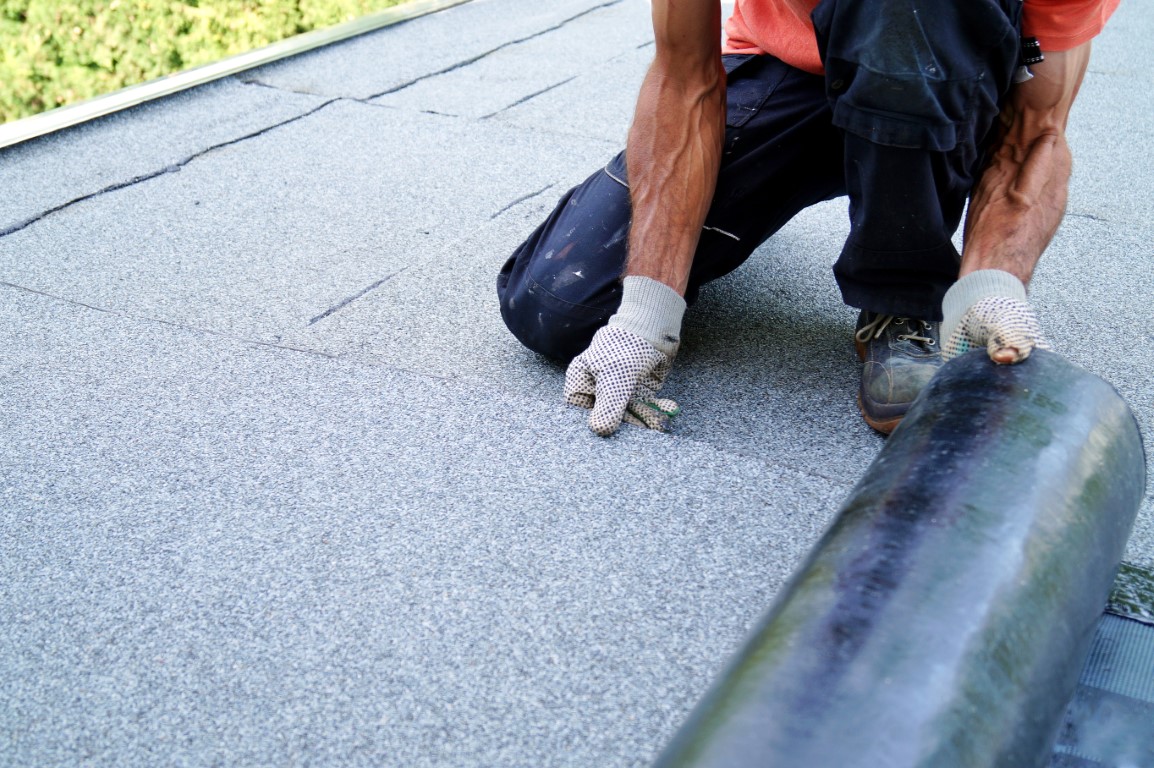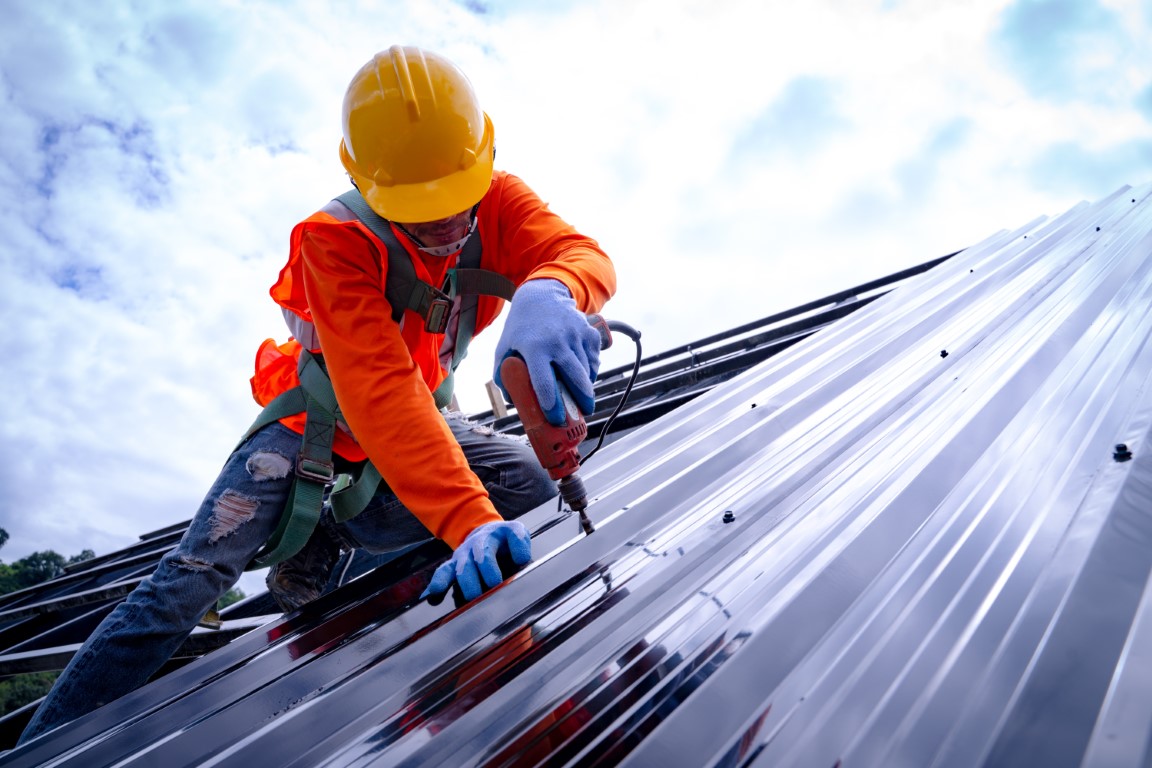Thermoplastic Polyolefin (TPO) roofing systems have become one of the fastest-growing commercial roofing solutions in recent years. Known for their durability, energy efficiency, and cost-effectiveness, TPO roofs are particularly well-suited for commercial flat roofs. In this guide, we’ll explore what TPO roofing is, its application for commercial flat roofs, the installation process, lifespan, repair, and maintenance considerations.
What is TPO Roofing?
TPO roofing is a single-ply membrane composed of a blend of polypropylene and ethylene-propylene rubber. This roofing material is manufactured in large sheets, typically 10, 12, or 20 feet wide, which are rolled up and transported to the installation site. TPO is known for its white, reflective surface that effectively reduces heat absorption, leading to lower energy costs.
Installation Methods for TPO Roofing
If you are interested in upgrading your flat roof through the installation of a TPO roofing system, it is important to make sure that you work with an experienced flat roofing company for a durable, watertight, and long-lasting roof. Here’s a detailed look at the process:
1. Substrate Preparation
Before installing a TPO roofing system, the existing roof substrate must be meticulously prepared:
- Cleaning: The roof surface is cleaned to remove dirt, debris, and any loose material. This ensures that the new TPO membrane adheres properly.
- Removal: Any old roofing material, such as built-up roofing or other single-ply membranes, is removed. This process exposes the underlying deck, which may be concrete, wood, or metal.
- Repair: The exposed deck is inspected for damage. Any damaged areas are repaired or reinforced to provide a stable foundation for the new roofing system.
2. Insulation Installation
Insulation is a crucial component of the TPO roofing system, contributing to the building’s energy efficiency and thermal performance. The insulation boards are laid out over the roof deck and secured in place. Depending on the design requirements, multiple layers of insulation might be installed to achieve the desired thermal performance and roof slope for proper drainage.
3. TPO Membrane Application
The TPO membrane is the primary waterproofing layer of the roofing system. There are a few different attachment methods for TPO roofing:
- Adhesive Bonding: The TPO membrane is adhered to the insulation or cover board using a bonding adhesive. This method provides a smooth and secure attachment, ideal for roofs where mechanical fasteners are not preferred.
- Mechanical Fastening: The membrane is mechanically fastened to the roof deck using plates and screws. This method is commonly used for its reliability and ease of installation.
- Seam Welding: Once the membrane sheets are in place, the seams where the sheets overlap are welded together using a hot-air gun. This creates a continuous, watertight seal that prevents water infiltration. The hot-air welding process ensures the seams are as strong as the membrane itself, providing long-lasting durability.
4. Edge Details and Flashings
Proper detailing at the roof edges and around penetrations is essential to the integrity of the TPO roofing system:
- Edge Details: The edges of the TPO membrane are secured and sealed to prevent wind uplift and water infiltration. This often involves mechanically fastening the membrane along the edges and covering it with metal edge flashing.
- Flashings: Areas around roof penetrations, such as vents, drains, and HVAC units, require special attention. Pre-formed or custom-fabricated TPO flashings are used to seal these penetrations, ensuring a watertight connection.
5. Final Inspection and Quality Control
Once the TPO roofing system is installed, a thorough inspection is conducted to ensure all seams are properly welded, and there are no defects in the membrane. Any issues are addressed immediately to guarantee the roof’s performance and longevity.
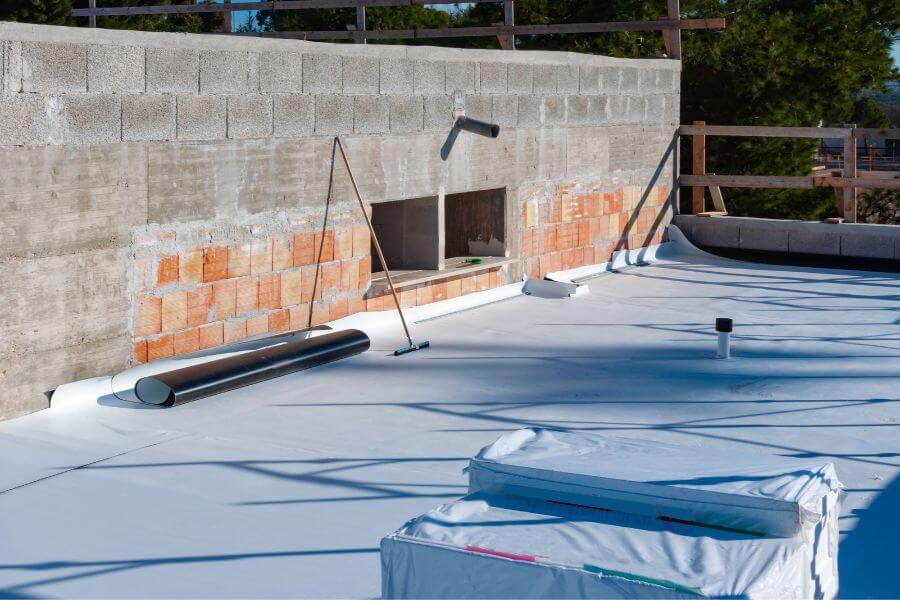
Lifespan and Durability of TPO Roofing Systems
A properly installed and maintained TPO roofing system can last between 15 to 20 years. Factors influencing its lifespan include:
- Quality of installation
- Environmental conditions
- Regular maintenance and timely repairs
Common Repairs for TPO Roofing
Over time, TPO roofs may develop several issues that can compromise their integrity and performance. Key problems include:
- Seam Failures: The seams of TPO membranes, where sheets overlap, can occasionally separate due to improper installation, thermal expansion, or physical stress. Seam failures can allow water to penetrate the roof system, leading to leaks and insulation damage.
- Punctures: Physical impacts from tools, falling debris, or foot traffic can puncture the TPO membrane, creating entry points for water.
- Flashing Deterioration: Flashings around roof penetrations such as vents, drains, and HVAC units can deteriorate over time due to UV exposure, temperature fluctuations, and mechanical wear. This can lead to leaks and further damage if not promptly addressed.
TPO Roofing Repair Methods
Addressing these common flat roof repairs promptly and effectively is crucial to maintaining the longevity and performance of TPO roofing systems.
1. Seam Repairs
- Re-Welding Seams: One of the primary repair methods for seam failures is re-welding. Using a hot-air gun, the separated seams are reheated and pressed together to restore the waterproof seal. This process ensures that the seams regain their strength and integrity.
- Patching: For minor punctures or tears along the seams, patches made of TPO material can be applied. The damaged area is cleaned, and a patch is cut to size and welded over the puncture, creating a durable repair.
2. Flashing Repairs
- Repairing Flashings: Deteriorated or damaged flashings around roof penetrations need to be repaired to prevent leaks. This involves removing the old flashing and installing new pre-formed or custom-fabricated TPO flashings. These new flashings are then welded to the existing membrane to ensure a watertight seal.
- Replacing Flashings: In cases where flashings are extensively damaged or worn out, replacing them entirely is necessary. This involves cutting away the old material, preparing the surface, and installing new flashings that are securely welded to the TPO membrane.
4. Infrared Inspections
- Leak Detection: Infrared inspections can be used to detect water infiltration beneath the TPO membrane. These inspections are typically conducted after sunset, as the roof cools, to identify areas where water has accumulated in the insulation. These areas appear warmer on an infrared camera due to the retained heat, allowing precise identification and repair of leaks.
5. Re-Coating
- Silicone Restoration Membrane: For TPO roofs with minor issues and less than 25% saturation, a silicone restoration membrane system can be applied. This involves cleaning the roof, repairing damaged areas, and applying a silicone coating to extend the roof’s life and improve its waterproofing capabilities.
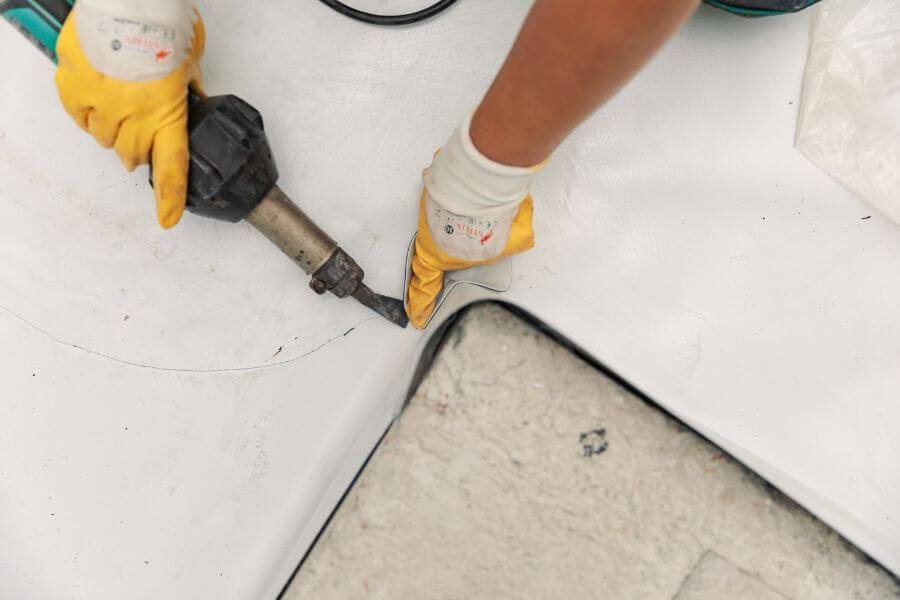
Maintenance Tips for TPO Roofing
Proper maintenance of TPO roofing systems is essential to ensure their longevity and performance. Here are detailed maintenance tips to keep your TPO roof in optimal condition:
- Regular Inspections: Schedule annual inspections to identify and address minor issues before they escalate. Inspect seams for separation, flashings around penetrations for wear, and the overall condition of the membrane.
- Cleaning: Keep the roof surface clean to prevent debris accumulation and potential damage. Remove leaves, branches, and dirt regularly. Clean drains and gutters to ensure proper drainage and prevent water buildup.
- Quick Repairs: Address any signs of damage immediately to prevent further deterioration and costly repairs. Re-weld seams that have separated and patch punctures. Engage professional roofing contractors for permanent repairs.
- Seasonal Maintenance: Adapt your maintenance routine to seasonal changes. In spring and fall, conduct thorough inspections and cleanings. In winter, ensure the roof is clear of snow and ice to prevent excessive weight and membrane damage. In summer, check for UV damage and address any blistering or cracking.
- Documentation and Record Keeping: Maintain detailed records of inspections, repairs, and maintenance activities. Document the findings of each inspection, keep a log of maintenance activities, and record details of all repairs. This helps in tracking the roof’s condition over time and planning for future maintenance needs.
Advantages of TPO Roofing
- Energy Efficiency: TPO’s reflective surface reduces cooling costs by reflecting UV rays and heat.
- Durability: Resistant to tears, punctures, and impact damage.
- Environmental Impact: TPO is a recyclable material, making it an environmentally friendly option.
- Cost-Effectiveness: While initial installation costs can be higher than some alternatives, the energy savings and long lifespan offer a favourable return on investment.
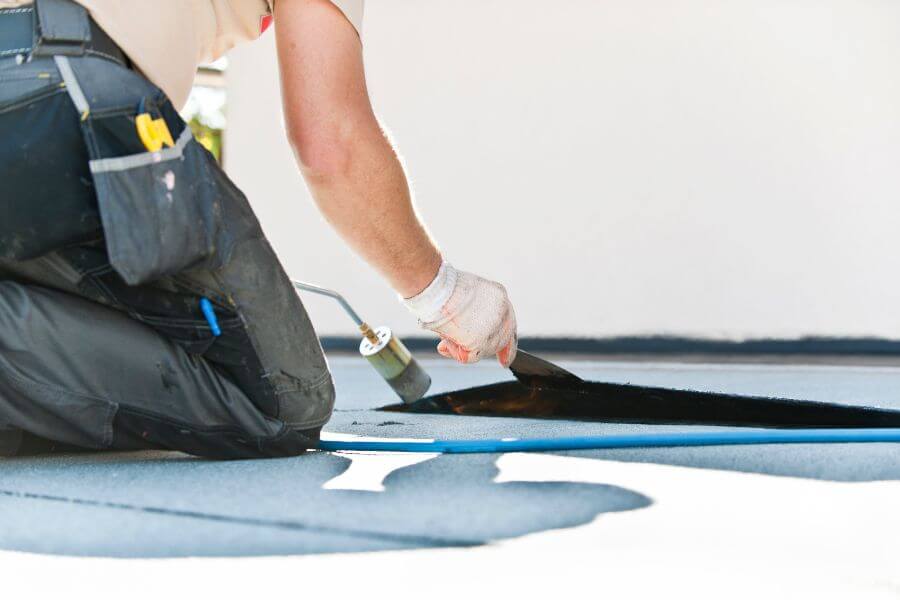
TPO roofing systems offer an excellent solution for commercial flat roofs, combining durability, energy efficiency, and ease of maintenance. By understanding the installation process, lifespan, and maintenance needs, building owners can ensure their TPO roofs provide reliable protection and performance for many years.
For expert TPO roofing services, including installation, repairs, and maintenance, Industrial Roofing Services Limited is here to help. Contact us today to learn more about how we can support your commercial roofing needs.


